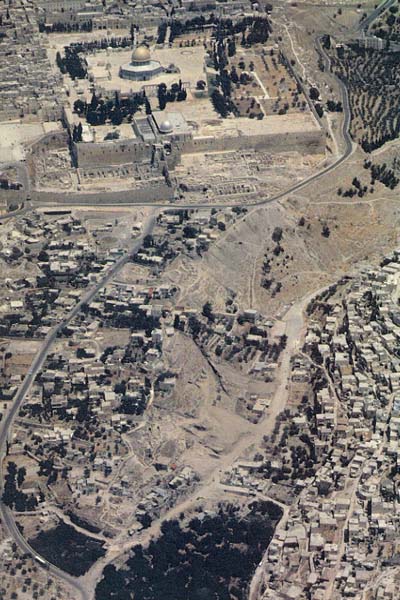Image Details

Zev Radovan
The City of David from the air, looking north. Now sprinkled with houses on the crest, the 15-acre area where the earliest Jerusalem was located slopes south from the walled Temple Mount, easily recognizable by the Dome of the Rock at its center. Two modern roads running north-south meet at the southern tip of the City of David, lower left. These roads roughly define this most ancient Jerusalem—first settled 5,500 years ago, first walled about 1800 B.C. and captured by King David from the Jebusites about 1000 B.C.
The road on the right passes through the Kidron Valley, separating the City of David from the hill to the east, now covered by the village of Silwan. The road on the left marks the Central, or Tyropoean, Valley, which bounds the City of David on the west. Much of it has been filled in since ancient times.
To the north, extensively excavated areas flank the southern wall and the southwestern corner of the Temple Mount. It was here in the Temple Mount area that the City of David expanded during the time of Solomon. In the tenth century B.C., Solomon built the First Temple on a raised platform much smaller than the later Temple Mount, enlarged to its present size in the first century B.C. by Herod the Great.
